Yongjusa Temple In Hwaseong
![Daeungbo-jeon [Main Hall] of Yongjusa Temple in Hwaseong City yongjusa-temple-daeungbojeon-main-hall](https://www.koreattrack.com/images/yongjusa-temple-daeungbojeon-main-hall.jpg) Daeungbo-jeon [Main Hall] of Yongjusa Temple in Hwaseong City
Daeungbo-jeon [Main Hall] of Yongjusa Temple in Hwaseong CityNestled on the picturesque slopes of Hwasan in Taean-eup, Hwaseong, lies the magnificent Yongjusa Temple, also referred to as the Dragon Jewel Temple.
This revered Buddhist temple holds great significance in South Korea's cultural and religious landscape, with its stunning architecture, intricate carvings, and serene surroundings.
Visitors can immerse themselves in the temple's ethereal atmosphere, soak up its rich history, and marvel at its grandeur.Let's delve into its fascinating history...
Origins & Name
Yongjusa Temple in Hwaseong, rich with history dating back to 854 AD, was originally known as Garyangsa and was founded by Yeomgeo Hwasang, the Second Patriarch of the Gajisan School.
During the reign of King Gwangjong in Goryeo, National Preceptor Hyegeo Guksa resided in the temple, fervently praying for the state's prosperity and well-being.
The temple's name, Yongjusa, meaning "Dragon Jewel Temple," embodies this sacred place's majestic and awe-inspiring nature. With its long-standing legacy, the temple remains an important cultural and religious landmark in Korea.
Yongjusa Temple's Significance
 Yongjusa Temple Bronze Bell
Yongjusa Temple Bronze Bell Yongjusa Temple Bronze Bell - sideview
Yongjusa Temple Bronze Bell - sideview Yongjusa Temple Bronze Bell - front view
Yongjusa Temple Bronze Bell - front viewLocated within the historic temple of Yongjoosa are two majestic bells believed to have been crafted during the Unified Silla period.
Amongst the bells, one particularly stands out, known as the "Bell of Yongjoosa," designated a national treasure with the number 120. The temple holds a significant place in the history of Korean Buddhism, as it received rare and direct support from King Jeongjo, the 22nd King of the Joseon dynasty.
He initiated the reconstruction of Yongjoosa as he sought to commemorate his father, Prince Sado, who had met a tragic end.
Additionally, King Jeongjo was also responsible for overseeing the construction of two of Suwon's most notable landmarks, the Hwaseong Fortress and the Hwaseong Haenggung Palace, which are closely linked to the history and culture of Yongjoosa.
Filial Piety
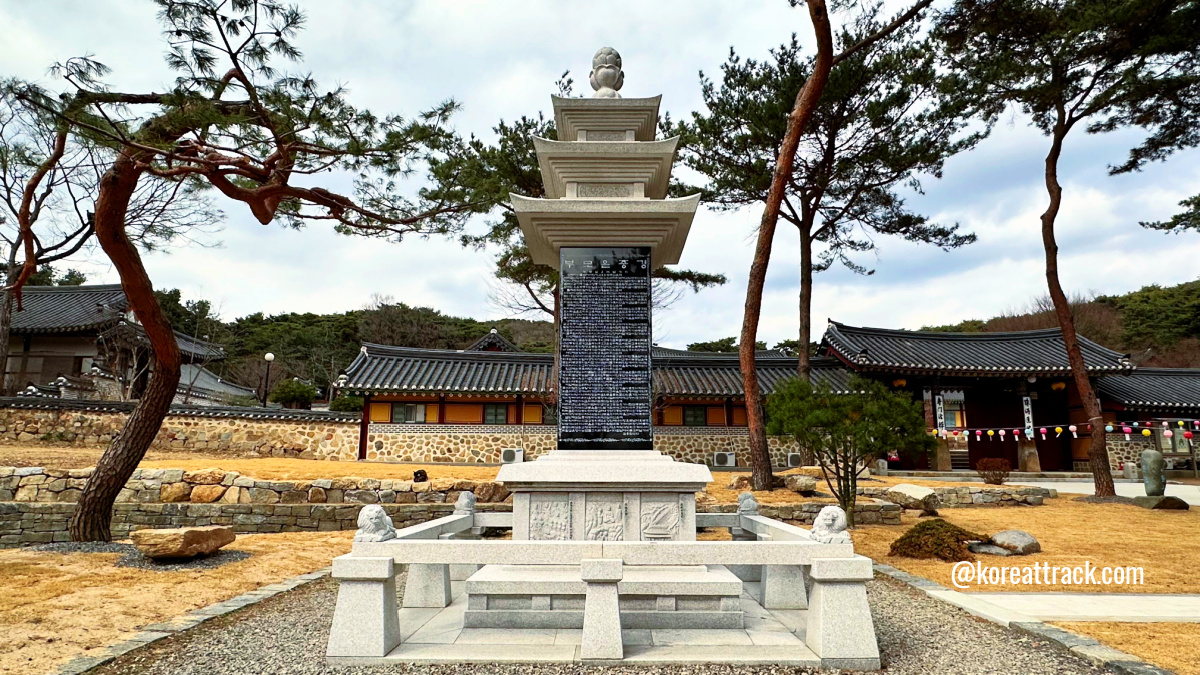 Yongjusa Temple Filial Piety Stone Pagoda Inscriptions
Yongjusa Temple Filial Piety Stone Pagoda Inscriptions Yongjusa Temple Filial Piety Stone Pagoda Inscriptions
Yongjusa Temple Filial Piety Stone Pagoda Inscriptions Yongjusa Temple Filial Piety Stone Pagoda Inscriptions (backside view)
Yongjusa Temple Filial Piety Stone Pagoda Inscriptions (backside view)Filial Piety and Legacy
During the reign of King Jeongjo, he made an unprecedented decision to move his father's tomb to a new location near Yongjusa. This temple held great significance in Korean Buddhism.
The reason behind this decision was to ensure that the soul of Prince Sado, his late father, could rest in peace. This act of filial piety and respect for his father's memory transformed Yongjusa into a center of devotion and respect for his parents.
The temple's history is a testament to the King's love and honor for his father. Today, Yongjusa is a symbol of the country's religious heritage and the headquarters of the second religious district of the Jogye Order of Korean Buddhism, which oversees more than 80 branch temples.
 Four gods at the first gate
Four gods at the first gateTemple Layout
As you enter the temple grounds, you will first encounter the Cheonwangmun Gate, also known as the "Four Heavenly Kings Gate." The gate houses four magnificent statues of the Heavenly Kings, known for their intense and intimidating appearance.
After passing the temple admission booth, you will walk along a winding pathway that passes by a gorgeous collection of twisted red pines until you reach the Hongsalmun Gate.
This gate has two red-painted poles connected across the top beam, symbolizing the temple's royal lineage. This gate style is typically found at a royal tomb, highlighting the temple's royal origins.

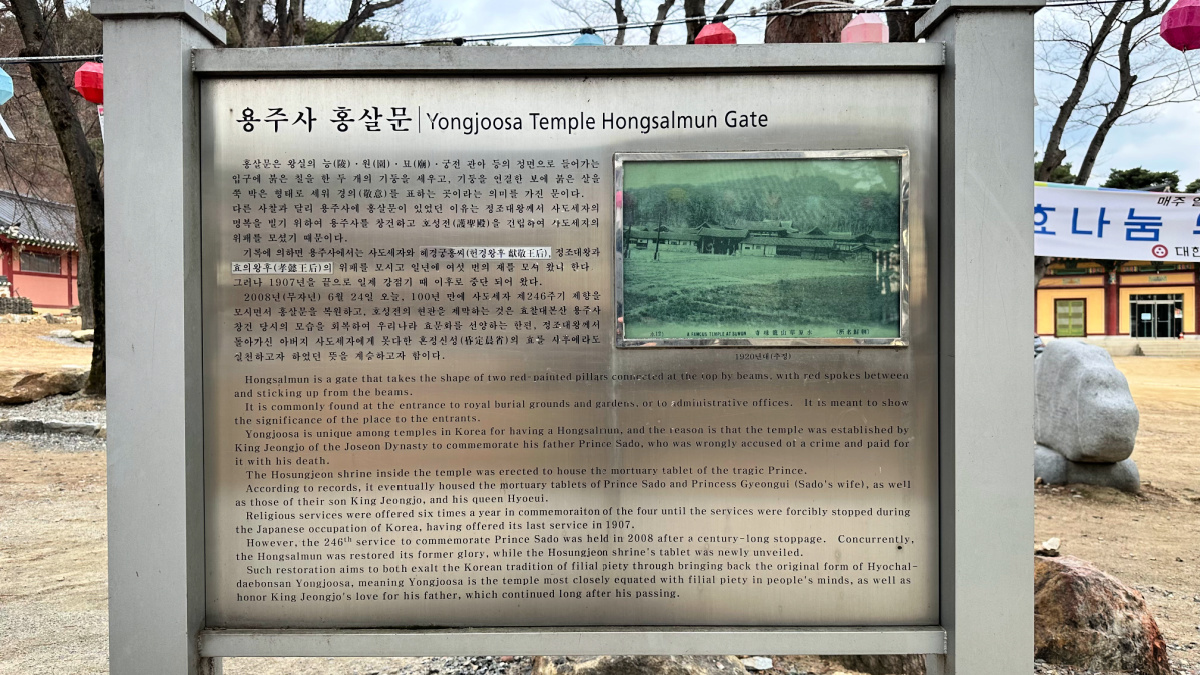
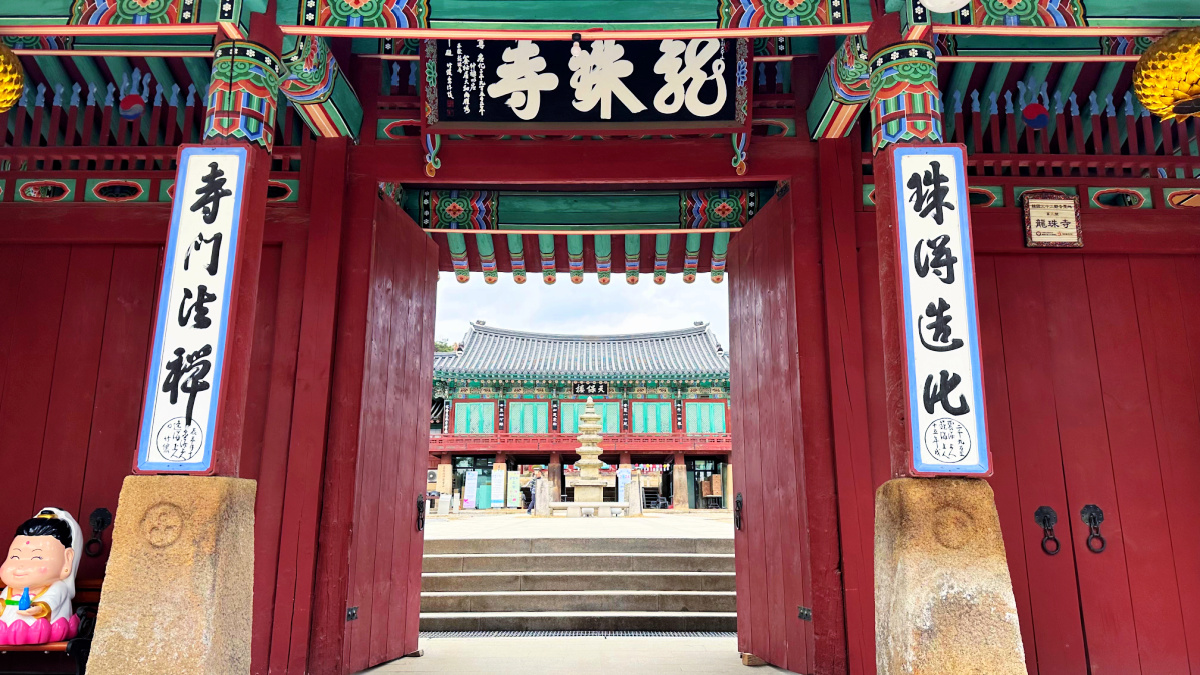
Once you pass through the Sammun Gate, which is decorated with a collection of ancient stone statues, you will enter Yongjusa Temple's outer courtyard.
Here, you will see a five-story stone pagoda, and just beyond it is the Boje-ru Pavilion. To gain admittance to the temple's inner central courtyard, you must pass under the low-lying ceiling of the Boje-ru Pavilion.
Daeungbo-jeon Hall
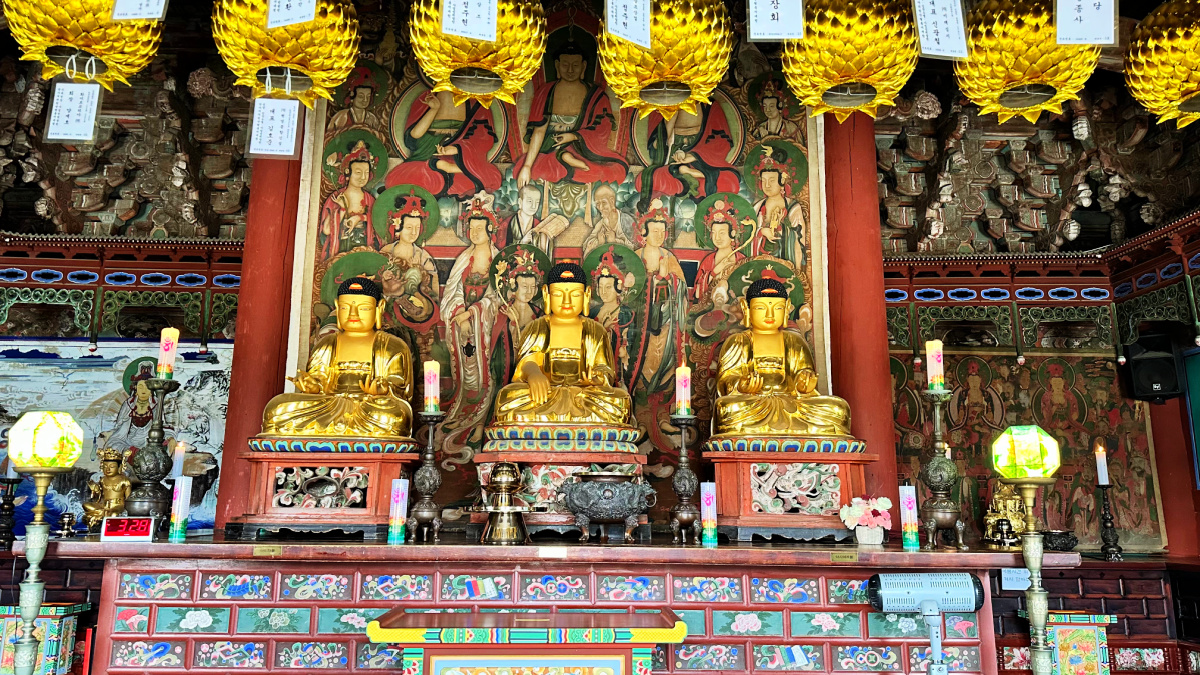
Straight ahead is the Daeungbo-jeon Hall, the main hall of which dates back to 1790. The exterior walls of the main hall are adorned with Palsang-do (The Eight Scenes from the Buddha's Life) murals, while the interior is highly elaborate and ornate.
The main altar features a triad of statues centered by Seokgamoni-bul (The Historical Buddha), with Yaksayeorae-bul (The Medicine Buddha and the Buddha of the Eastern Paradise) and Amita-bul (The Buddha of the Western Paradise) on either side.
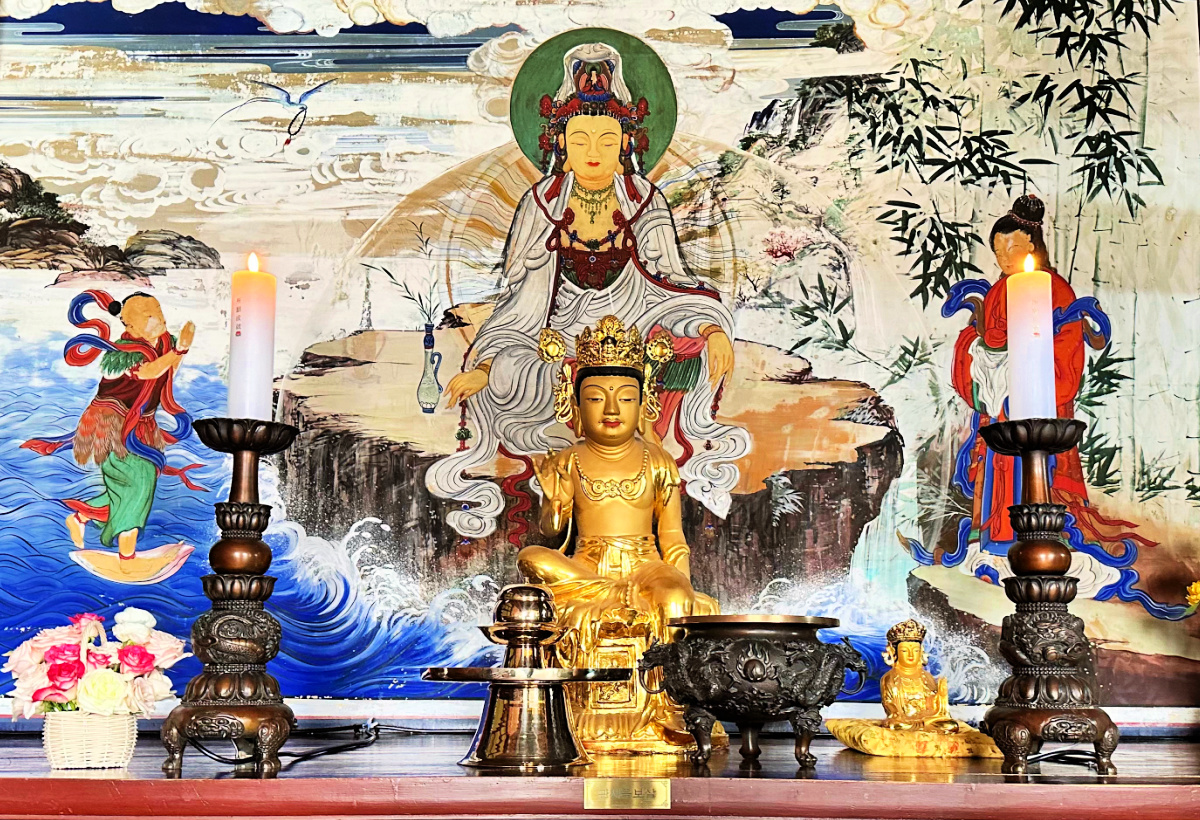
Behind the main altar is a beautiful altar mural, measuring four meters in height and three meters in width, which was painted by Kim Hongdo, a famous Korean painter and county magistrate.
The main altar is housed under an older-looking datjib (canopy). On either side of the main altar is a mural dedicated to an all-white Gwanseeum-bosal (The Bodhisattva of Compassion) and a Gamno-do mural for the dead.
To the left of the main hall, slightly to the rear, you will find the Cheonbul-jeon Hall. Inside this hall are a thousand white statues of Buddha, and spherical golden lights stand in front of the golden triad of statues resting on the main altar.
Behind this hall is the Samseong-gak shaman shrine, which is relatively compact. The three shaman murals inside the Samseong-gak Hall are unique, but the Sanshin mural (The Mountain Spirit) is the most prominent.
It features a big-headed tiger that appears to be protectively smiling next to the Mountain Spirit, like a Cheshire cat.
On the right side of the Samseong-gak Hall, still towards the rear of the main hall, and across a field, you will see an elegantly designed stupa. In front of this stupa are two more shrine halls at Yongjusa Temple.
The first is the Jijang-jeon Hall, which houses a green-haired statue of Jijang-bosal (The Bodhisattva of the Afterlife) on the main altar. The exterior walls of this hall depict the various stages of life. The other shrine hall is the Hoseong-jeon Hall.
You will find the memorial tablets for Crown Prince Sado in this hall. In front of this hall is a uniquely designed three-story pagoda distinguished by its black body. Korean writing speaks of filial piety.
At Yongjusa Temple in Hwaseong, visitors can enjoy National Treasure #120, the Bronze Bell of Yongjusa Temple.
This bell is believed to date back to the early part of the Goryeo Dynasty (918-1392) and has a style reminiscent of the Silla period (57 B.C. to 935 A.D.).
The bell has four striking points, or "dangjwa" in Korean, and is decorated with beautiful Bicheon (Heavenly Deities) and a Buddha triad on the side. Admission to the temple costs 1,500 won.
If you ever find yourself near Hwaseong, consider visiting this serene temple nestled amidst nature's beauty. 🌿🏯
Sources:
http://www.yongjoosa.or.kr/
https://bing.com/search?q=Yongjusa+temple+Hwaseong+South+Korea
https://en.wikipedia.org/wiki/Yongjusa
https://www.touristlink.com/south-korea/yongjusa-hwaseong/overview.html
https://buddha-heads.com/blog/yongjusa-temple/
Yongjusa Temple – 용주사 (Hwaseong, Gyeonggi-do) - Dale's Korean Temple Adventures (koreantempleguide.com)
Getting to Yongjusa Temple In Hwaseong
To get to Yongjusa Temple, you'll first need to get to Byeongjeom Station on Line #1 on the Seoul subway system. Go to Exit #3 and walk to the bus stop on your right.
Any green buses, like Bus #34, 34-1, 44, 46, 47, or 50, will go to Yongjusa Temple. The bus ride from the subway station should take between ten and fifteen minutes. Listen to the bus stops announcement. Anyhow, you will see the temple area on your right.
Address: 136, Yongju-ro, Hwaseong-si, Gyeonggi-do [경기도 화성시 용주로 136]
If you have inquiries, please call the 1330 Travel Hotline at +82-2-1330 for assistance in Korean, English, Japanese, or Chinese.
For more information, please dial +82-31-234-0040.
The Filial Piety Museum is closed on Mondays. Parking is available. Visit its website at https//:www.yongjoosa.or.kr.
- Home
- Temples in South Korea
- Yongjusa Temple in Hwaseong
Get Exciting Activities
Book one of our exciting activities today to experience the thrill of a lifetime! Take advantage of this opportunity and secure your spot in advance.
Hotel Map Guide
Find your affordable, accessible, and comfortable hotel in Seoul at Agoda.Com. See the hotel map below...
Hotel Booking Guide
Find affordable and amazing hotels on Agoda.com using the search box below. Book now to enjoy great discounts and save!
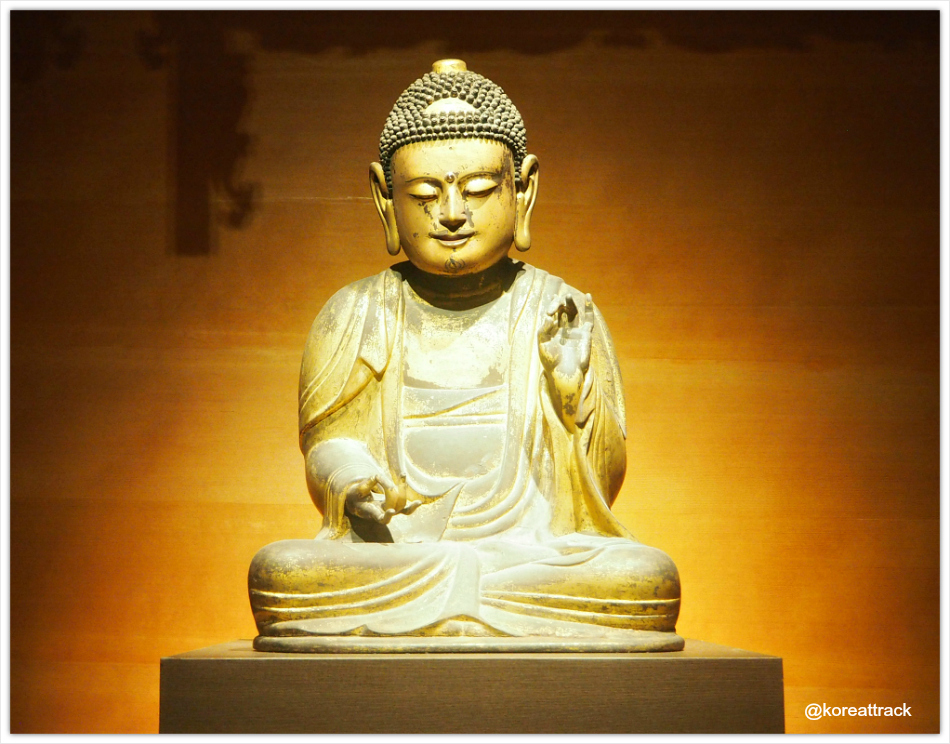
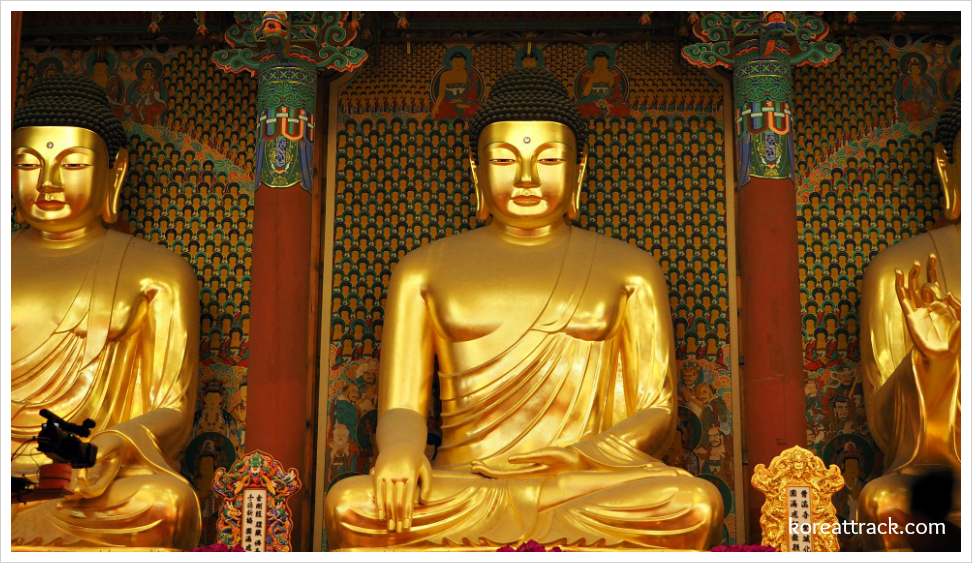
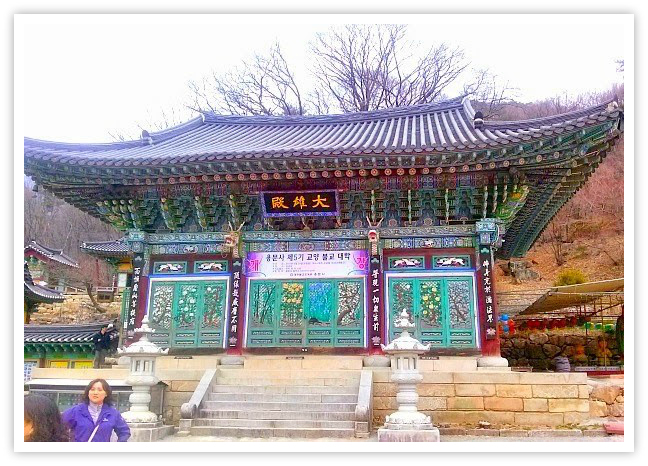




New! Comments
What do you think about this page? Leave me a comment in the box below.